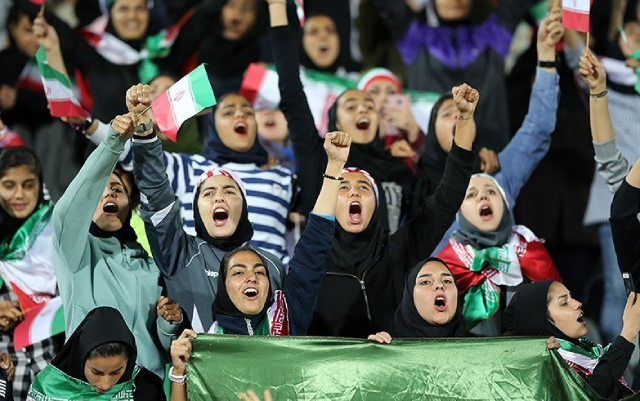The Persian version of this article has printed in “Goal” daily, Dated: Thursday, October 18, 2018.
This Show Is Good, But…
Open the Doors Wider
Vahid Namazi
Regarding the limited, handpicked, curated, and somewhat “performative” presence of women at Azadi Stadium to watch the national football team’s match, several points can be raised. Undoubtedly, the most significant is the occurrence of a pivotal event that, after nearly four decades, will usher in a new form of football fandom culture. While this may feel unfamiliar to us, the selective and restrictive approach toward half of a sports-loving society has become obsolete even in many Islamic countries. We have repeatedly stated that the complete ban on women attending sports events is a blatant injustice to half of a society that has stood shoulder to shoulder with men in every sphere. Time and again, their presence has portrayed a progressive, modern, and respectable society, rooted in preserving essential Islamic values. What was unjustly ignored under the shadow of that “ban” was the reality that women eager to attend sports stadiums are the same women and girls who are active in society every day—studying in universities, serving as parliamentarians and council members, working alongside men to earn a living, and raising the next generation. They are not from another land. They have repeatedly demonstrated their moral character, proving that their presence can significantly reduce the violent tendencies often seen in male behavior.
Now that, after considerable efforts, a small and somewhat performative space has been opened for women to attend Iran’s international football matches (even amidst serious warnings from FIFA and the AFC, whose threats seem to have facilitated this selective entry, much like the quasi-orchestrated presence of women at World League volleyball matches that brought a handful to Azadi Stadium), we must not let this opportunity slip by. If the rampant hooliganism, “thuggery,” and unrestrained “vandalism” of the 1970s led even Europeans to label football a male sport and surrender to the chaos and its unfortunate consequences for a time, it was ultimately the transformation of that “so-called masculine” environment and the family-oriented approach to football as a significant social and entertaining event that came to their rescue. This shift drove the wild waves of hooliganism out of football stadiums, to the point where organized groups of reckless, disruptive thugs—who had exhausted even the toughest European police forces—were forced to retreat to the city outskirts or fade into obscurity in smoky taverns. With a new, structured, and organized approach, the social phenomenon of football can serve as a platform to alleviate the burdens of daily life’s myriad problems while generating greater, more purposeful revenue—a win-win deal!
The role of women in the country’s sports cannot be overlooked. When one-third of Iran’s medals at the recent Para-Asian Games were earned through women’s efforts, when an Iranian woman referee was entrusted with officiating the youth Olympic football final, when Iranian girls won the Asian Futsal Championship two consecutive times, and more, it is clear that Iranian women play an undeniable role in the nation’s sports. Their role in fandom is equally unignorable and cannot be erased. Football, as a reliable social phenomenon, has repeatedly proven to be a powerful catalyst for unity and solidarity in societies, and women, as half of any population, have a significant stake in this phenomenon. During the 2018 World Cup, when Azadi Stadium hosted countless women and families eager to watch the national team’s matches on the large screen installed there, no incidents occurred, no disruptions took place, and no cherished values were compromised. Therefore, following the selective and limited entry of women to watch the national team’s match, it is time for another bold and intelligent step to soften the masculine and somewhat harsh atmosphere of stadiums with the presence of more women and families—even if the national media remains indifferent or dismissive of this significant change.

